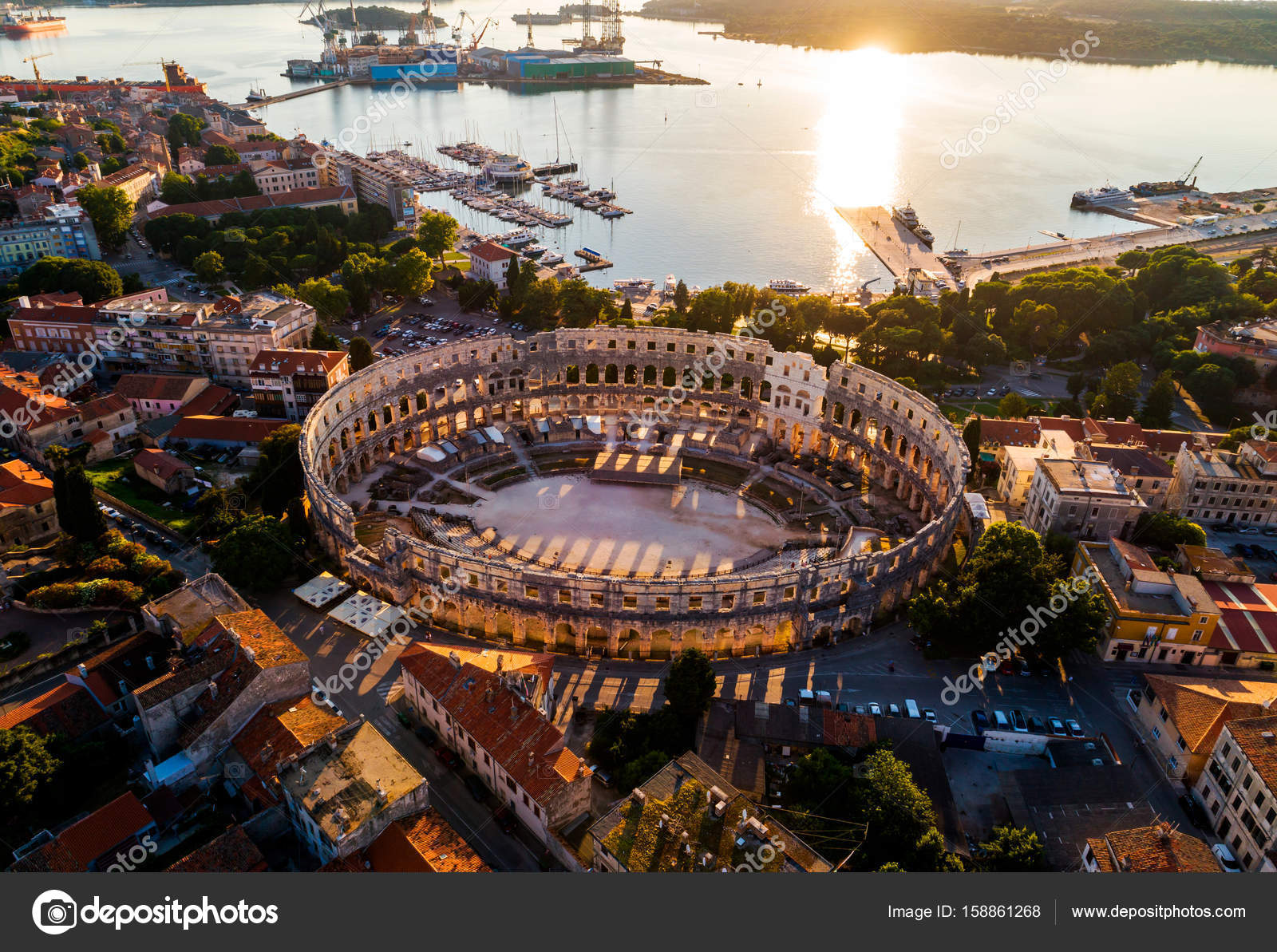
Pula Arena bij zonsondergang het Romeinse amfitheater van Pula, Kroatië — Stockfoto © conceptw
The Pula arena is the sixth-largest Roman amphitheater and one of the best preserved. A visit to the Pula arena not only includes the ability to walk around the interior, but also tour the museum in the subterranean hall below where the gladiators and animals were held. The Pula arena's outer walls are almost completely intact, and when.

Things to do in Pula, Croatia Travel Guide for the Gem of Istria Drifter
Pula Amphitheater. Also known as the Pula Arena, this magnificent structure is the highlight of any visit to Pula and is one of the top sights in Istria. It was initially built during the reign of Emperor Augustus (31BC-14AD) and was enlarged during the reign of Claudius, finally taking shape during the reign of Emperor Vespasianus (69-96AD).

Pula Arena in Croatia and Pula City Old Town Stock Image Image of croatia, heritage 153798683
Prices you can trust. No hidden fees. No hidden charges. Save with Skyscanner. Compare prices from 1,200 travel companies. See all your options and book today!
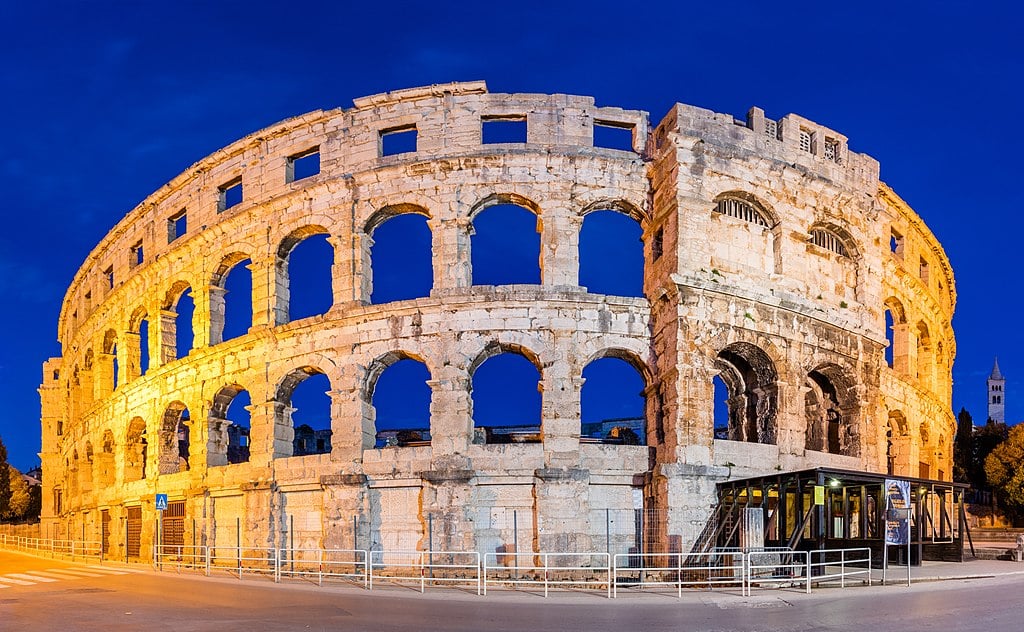
Record Number of Visitors to Pula Arena Croatia Week
Located in Croatia's Istria County, the Pula Arena is one of the world's six largest surviving Roman arenas. Constructed between 27 BC and 68 AD, during the reign of Emperor Vespasian, at the.
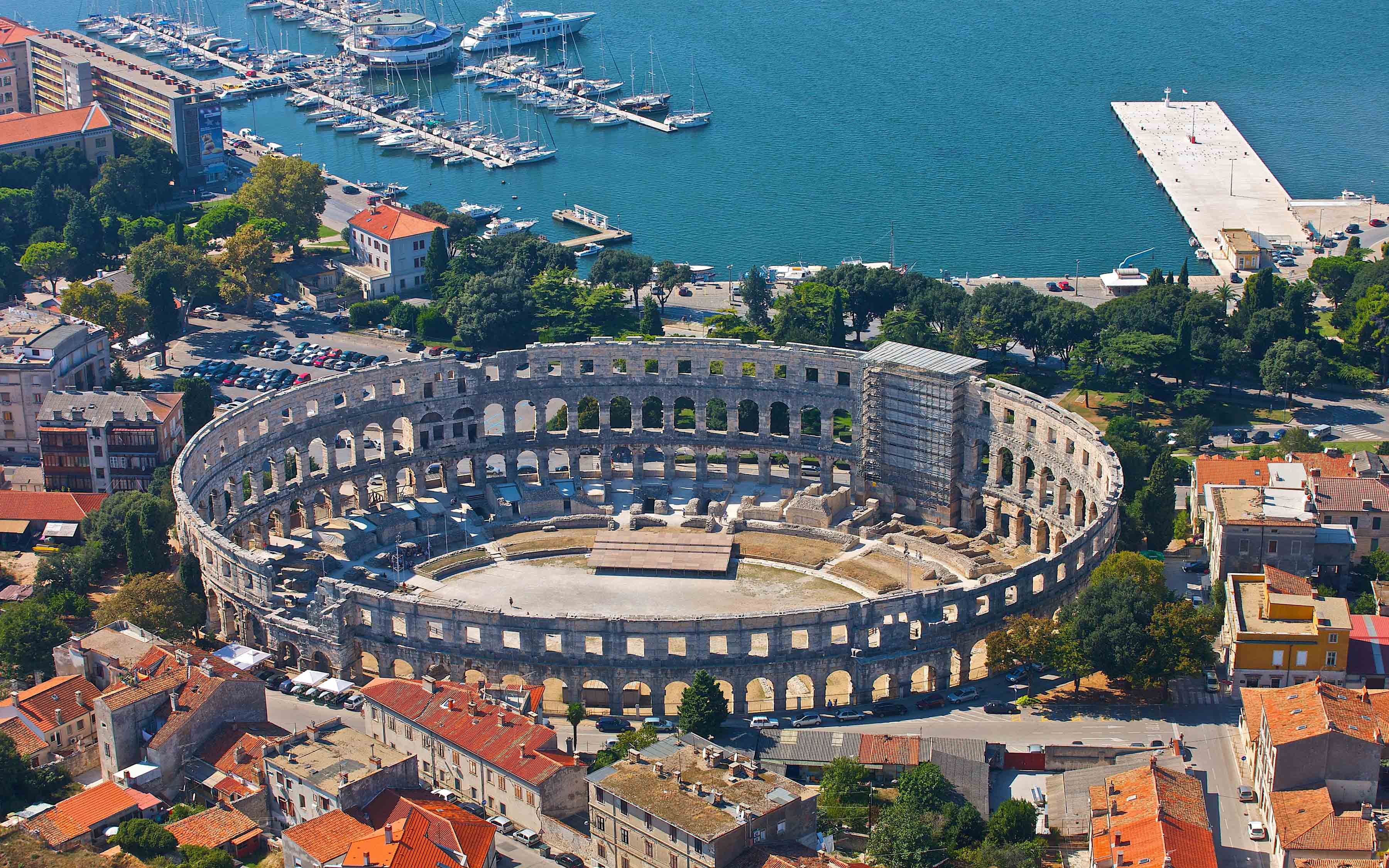
Arena Panorama Amfiteatar In Pula, Croatia Hd Wallpaper
Daily Special Hotel Deals. 24/7 Customer Services. We Speak Your Language.

Pula Arena Croatia Week
The Pula Arena ( Croatian: Pulska Arena; Italian: Arena di Pola) is a Roman amphitheatre located in Pula, Croatia. It is the only remaining Roman amphitheatre to have four side towers entirely preserved. It was constructed between 27 BC and AD 68, [2] and is among the world's six largest surviving Roman arenas. [2]

Pula Arena Croatia's Ancient Roman Amphitheater Decide Your Adventure
GENERAL LAYOUT & SIZE. Located on Croatia's Istrian peninsula, the city of Pula is home to one of 6 th largest Roman amphitheaters still standing today. Widely known as the Pula Arena, the structure is oval in shape and stretches 132.5m at its longest axis, 105.1m at its shortest. Standing 32.45m at its maximum height, the amphitheatre is.

The Pula Amphitheater “Arena” and two Theaters
The most famous and important monument, the starting and ending point of every sightseeing tour is the Amphitheater, popularly called the Arena of Pula, which was once the site of gladiator fights. It was built in the 1st century AD during the reign of Emperor Vespasian, at the same time as the magnificent Colosseum in Rome.

Pula Arena Exceptional Roman Amphitheater in Croatia Still Alive and Kicking Ancient Origins
What To Know About Pula Arena In Croatia—Rome's Best Preserved Amphitheater No, the Colosseum is not the only Roman amphitheater. There came a time in Rome's architectural history—when there arose in the heart of the republic's rulers, a spirit of infatuation with amphitheaters.

Roman Arena / Amphitheatre Pula Croatia YouTube
The sixth-largest Roman amphitheater still standing today, the Pula Arena is Croatia's most magnificent classical monument—and reason enough to check out Pula, Istria's main city. Built in the 1st century C.E. during the rule of Emperor Vespasian, this oval-shaped stunner once hosted gladiator fights and could hold up to 23,000 spectators.
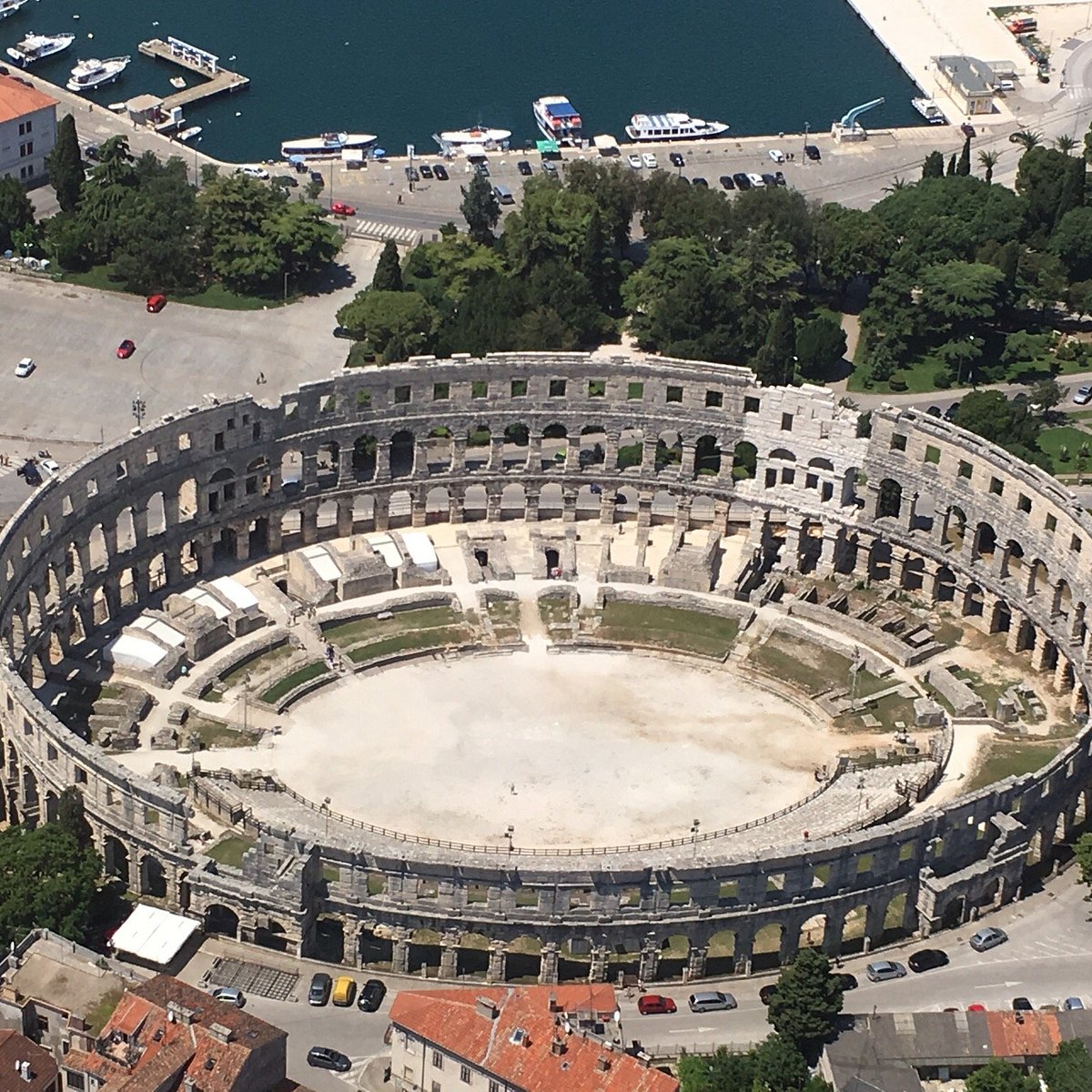
Pula Arena Pula Arena Yorumları Tripadvisor
Pula Arena, also known as Pula Amphitheatre, is a dramatic historic Roman amphitheatre in Pula, Croatia. Built in the 1st century AD, Pula Arena was constructed during the reign of the Emperor Vespasian who was also responsible for founding the Colosseum.
Soccer game played at the most ancient stadium in the world, at Pula Arena in Croatia. This is
The Pula Arena is one of the world's six largest surviving Roman arenas. It is the only remaining Roman amphitheatre to have four side towers and with all three Roman architectural orders completely preserved. No more can you find ancient Roman games here. However, it has become the stage for modern music shows, film festivals and.

A spectacular and fascinating Pula Arena
Pula Arena is a Roman Amphitheater located on the Istria peninsula of Croatia. Reasons to visit this Roman Amphitheater are; See a well preserved Roman Amphitheatre A quieter alternative to the Colosseum of Rome View the real clothes and weapons that Gladiators used Visit the Pula Arena underground Watch a live music concert or a Gladiator battle

Pula Arena
The Pula Arena is an ancient Roman amphitheater located in the city of Pula in Croatia. This is the 8th-largest city in the country and the largest city in Istria County in the utmost northwestern part of Croatia.
Roman Arena in Pula, Croatia during World Cup final r/europe
The Pula Arena, often referred to as the Roman amphitheater of Pula, is a true jewel of the Istrian port city. A visit to this imposing building is one of the best things to do in Pula, and a must-see on any tour of the city. It is a true masterpiece of Roman architecture and engineering, located in the heart of the port city.
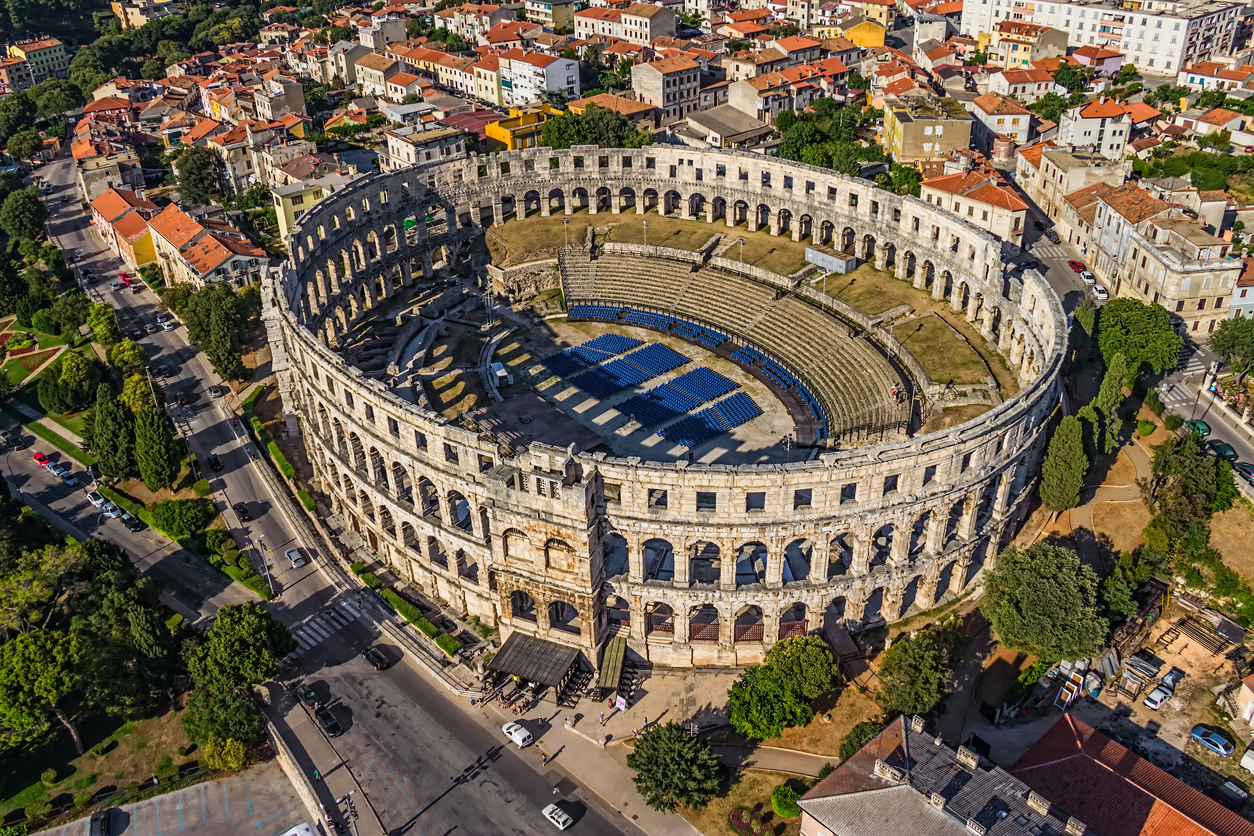
Top 5 Things to do in Pula Croatia Visit Pula Things to do in Pula
The Pula Arena is a Roman amphitheatre located in Pula, Croatia. It is the only remaining Roman amphitheatre to have four side towers entirely preserved. It was constructed between 27 BC and AD 68, and is among the world's six largest surviving Roman arenas. The arena is also the country's best-preserved ancient monument.